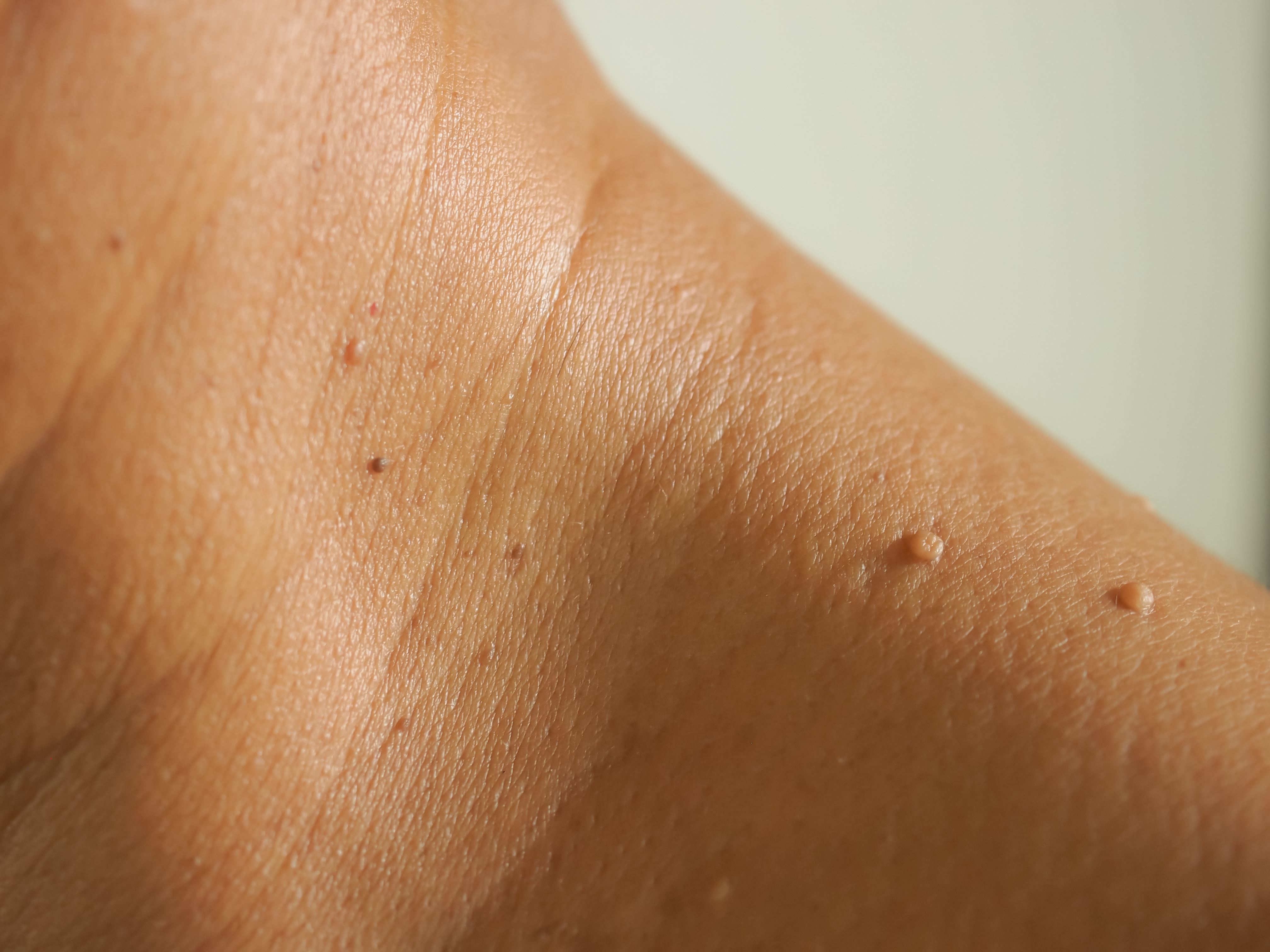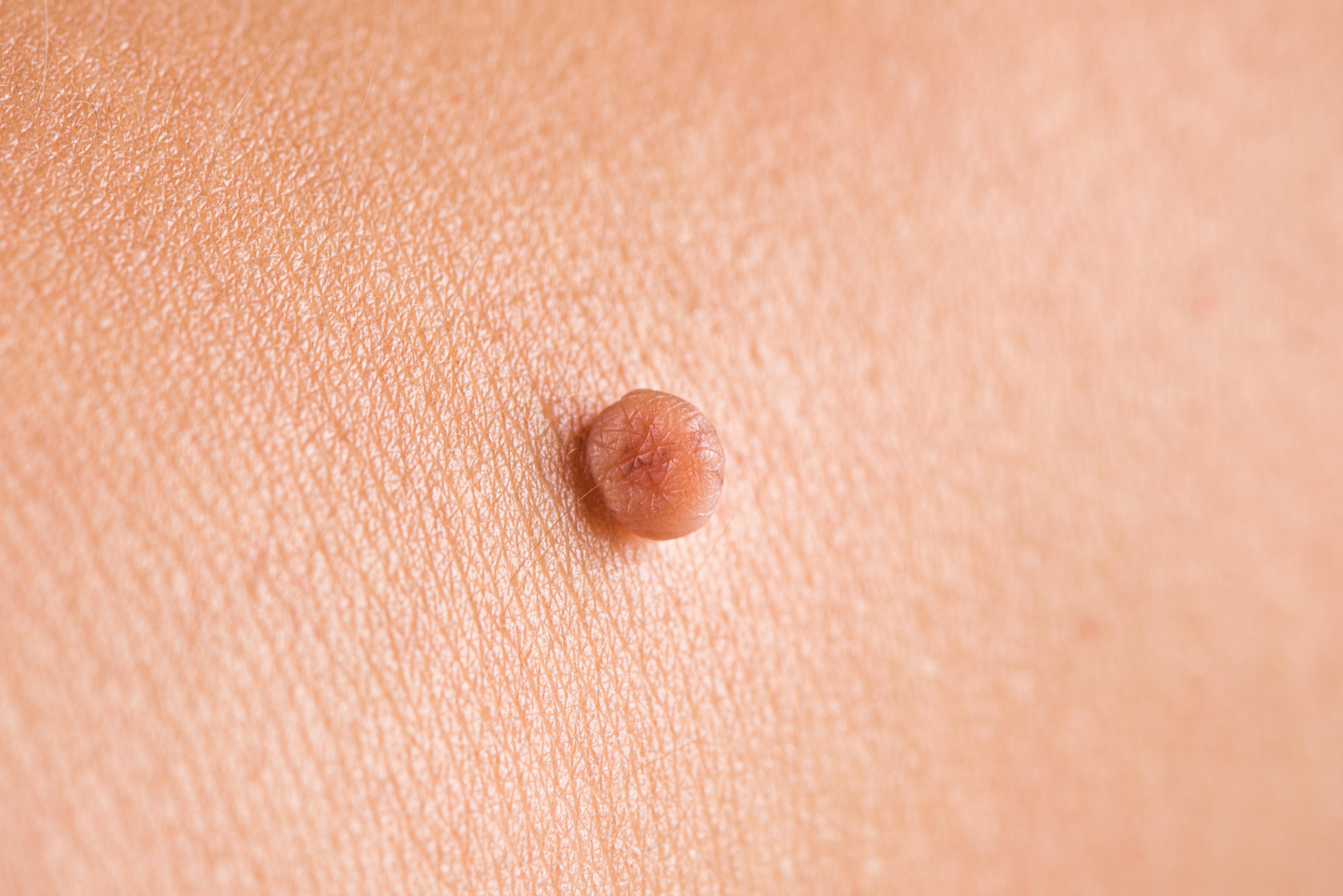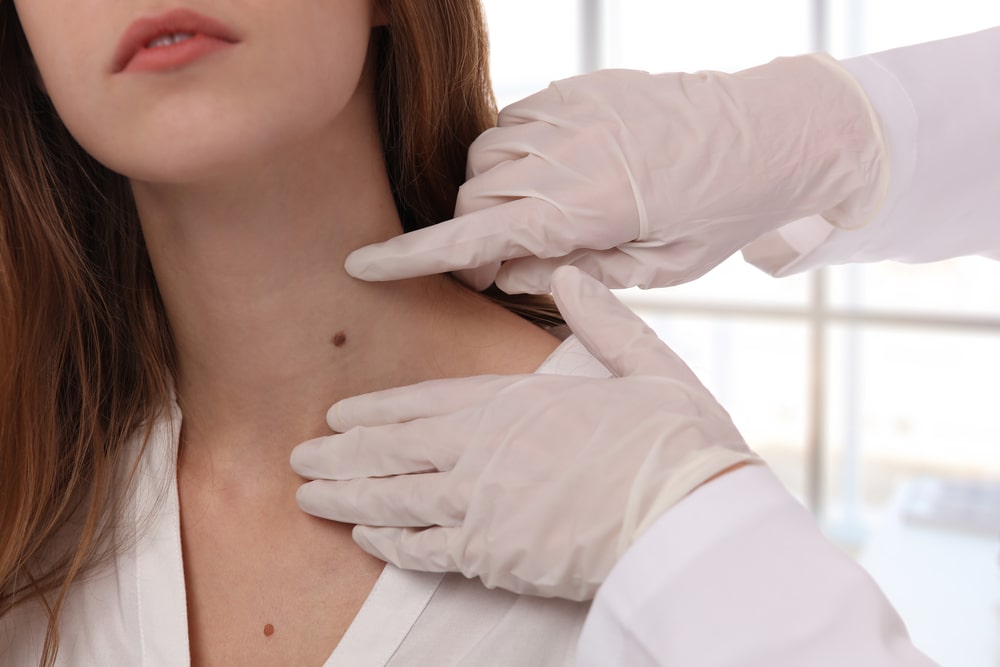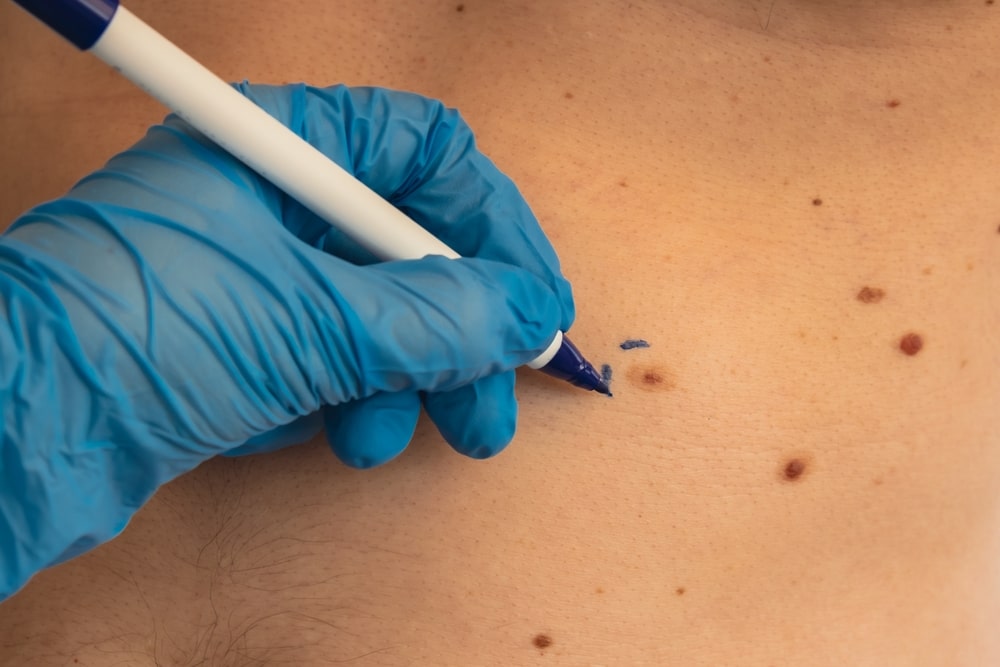Dr Derrick Phillips
Consultant Dermatologist
Specialist expertise: Acne, Rosacea, Eczema, Psoriasis, Melasma, Dermatology, Cosmetic Dermatology, Hyperhidrosis, Skin Tag Removal, Skin Cancer, Skin Surgery, Paediatrics.
Skin tag removal can be performed using a variety of techniques. It is important to consult with a specialist to ensure that it is in fact a skin tag and not a type of mole, and also to understand the risks and benefits of the various treatment options. In this blog post, we explain when a skin tag might need removing, how dermatologists remove them, how skin tag removal recovery works and what to expect when healing.

Skin tags are non-contagious, harmless growths that hang off your skin. They develop in areas where the skin rubs together, so they are commonly found on sites such as your neck, in your armpits, and under your breasts as well as around the eyes.
No one knows the exact cause for skin tags, but you may be at a higher risk if you:
Have type 2 diabetes
Are overweight
Are older
Wear tight or restrictive clothing that causes rubbing (especially in creases)
Skin tags are usually the same colour as your skin but can sometimes be slightly darker.

Skin tags are not cancerous and do not lead to skin cancer. However, they can grow and catch or snag on clothing or jewellery, causing the skin tag to become irritated, sore and bleed. In addition, they won’t disappear on their own.
If a skin tag on your eyelid is large enough, it can obscure your vision, making removal essential.
Sometimes, you may want to remove a skin tag for cosmetic reasons. It may be in a visible part of your body or large, which can cause feelings of embarrassment.
Whatever your reason for removing your skin tag, rest assured that OneWelbeck can help with skin tag removal in London.

Surgery or cryotherapy can remove skin tags. These methods remove your skin tag, but there is always a small risk of them returning – especially if you have a higher risk of them developing.
There are different surgical techniques to remove skin tags. Often the doctor will apply either a topical cream anaesthetic or injection anaesthetic to numb the area before removal. They may then either snip the skin tag either using a scalpel or surgical scissor, or may cauterise (burn) the skin tag to remove it. They will then also use cautery to stop any bleeding and form a scab.
If your skin tag is substantial, they may need to stitch it up.
Removing skin tags with cryotherapy is minimally invasive and doesn’t require anaesthetic. In cryotherapy, liquid nitrogen will freeze your skin tag. The freezing causes the tag to become a scab and drop off in a few weeks. You may experience some stinging or burning in the area.
The risks with any procedure include some pain, bleeding, small risk of infection, small scar at the site of removal and possible recurrence.

Skin tag removal recovery is simple. You can typically go home right away with some aftercare advice to follow.
When at home:
You must keep the area clean as recommended by your dermatologist
Do not pick any scab that forms (it will fall off independently)
Avoid direct sunlight on the treated area
Do not wear jewellery or clothing that will rub or irritate the wound or scab
Apply an ointment to the area (dermatologist will advise on which one)
The area can feel slightly tender after surgical removal, this will subside within a few days, and it is uncommon to need pain relief, if required usually paracetamol will suffice.
Skin tag removal has minimal side effects or risks. However, rare complications can occur.
Potential side effects can include:
Infection
Bleeding
Swelling
If you notice any of the above during your recovery, always contact your doctor or dermatologist.
Looking after your skin where the tag was removed is vital to your recovery and promotes better results.

The average healing time for skin tag removals is 7 to 10 days. If stitches were required then it can take longer.
Scarring is possible with skin tag removal. The area may initially be red and raised, but it can reduce in colour and size over time.
You should feel relatively ‘normal’ shortly after your skin tag removal, but that doesn’t mean the area has healed. You must carefully follow any aftercare advice your dermatologist provides to ensure you minimise the risk of complications.

Skin tags may be harmless, but they can quickly become irritated or be too large, so you may want them removed for several reasons. At OneWelbeck, we offer comprehensive skin tag removal services, including cryotherapy and surgical excision to remove them altogether.
Contact our team today to learn how we can help with skin tag removal. We’ll happily answer your questions about recovery and healing so you can feel confident in your decision.